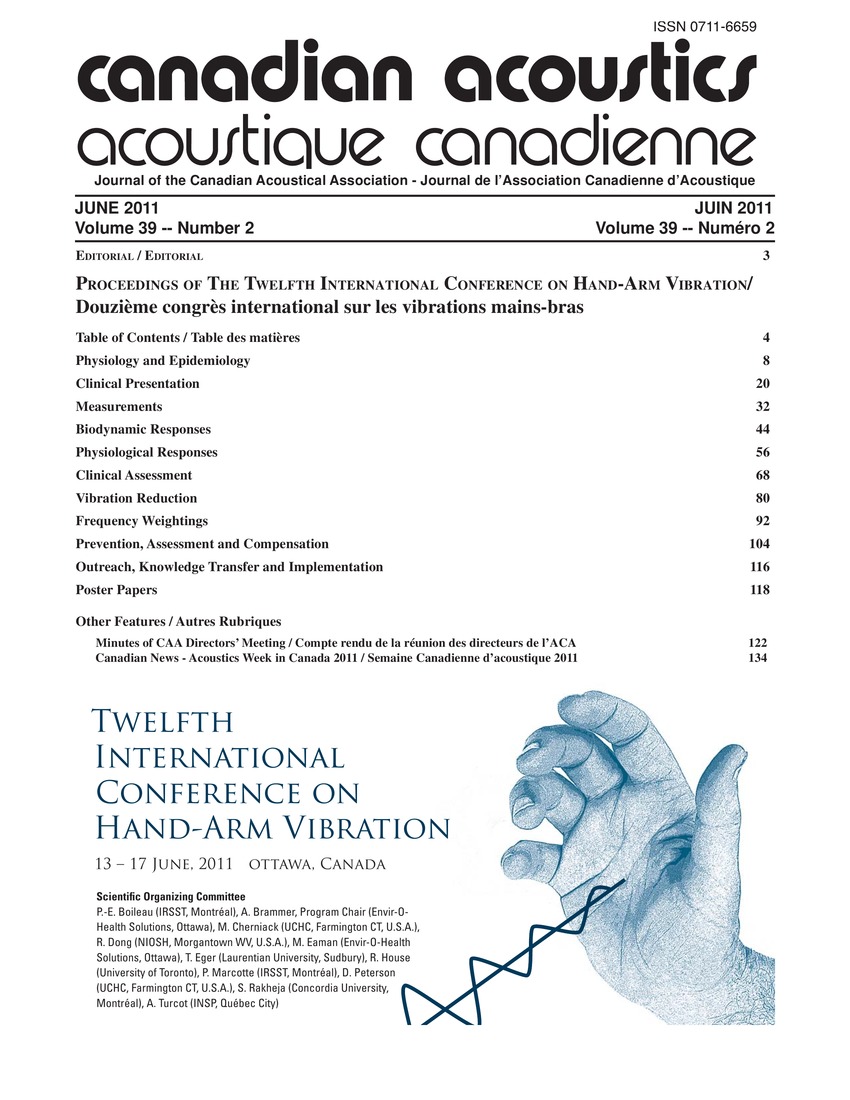Recovery of vascular function after exposure to a single bout of vibration
Keywords:
Control level, Repeated measures, Residual effects, Single exposure, Vascular functions, Vibration exposureAbstract
A model of vibration-induced dysfunction is used to determine the presence of residual effects of a single exposure to vibration on peripheral vascular function and residual effects, the number of days of rest needed for vascular function to recover after a single exposure. Rats were acclimated to the laboratory for 1 week prior to the beginning of the experiment. All data were expressed as a percent change from baseline and were analyzed using 2-way repeated measures ANOVAs. One day following exposure to vibration, vasoconstriction in response to UK-14304 is enhanced in vibrated arteries as compared to controls. The results also show that vascular responsiveness returns to control levels after a 7-day recovery period. Work rotation schedules that allow more than two days of recovery between subsequent bouts of vibration exposure may help reduce the risk of developing the vascular dysfunction that is characteristic of HAVS.Additional Files
Published
How to Cite
Issue
Section
License
Author Licensing Addendum
This Licensing Addendum ("Addendum") is entered into between the undersigned Author(s) and Canadian Acoustics journal published by the Canadian Acoustical Association (hereinafter referred to as the "Publisher"). The Author(s) and the Publisher agree as follows:
-
Retained Rights: The Author(s) retain(s) the following rights:
- The right to reproduce, distribute, and publicly display the Work on the Author's personal website or the website of the Author's institution.
- The right to use the Work in the Author's teaching activities and presentations.
- The right to include the Work in a compilation for the Author's personal use, not for sale.
-
Grant of License: The Author(s) grant(s) to the Publisher a worldwide exclusive license to publish, reproduce, distribute, and display the Work in Canadian Acoustics and any other formats and media deemed appropriate by the Publisher.
-
Attribution: The Publisher agrees to include proper attribution to the Author(s) in all publications and reproductions of the Work.
-
No Conflict: This Addendum is intended to be in harmony with, and not in conflict with, the terms and conditions of the original agreement entered into between the Author(s) and the Publisher.
-
Copyright Clause: Copyright on articles is held by the Author(s). The corresponding Author has the right to grant on behalf of all Authors and does grant on behalf of all Authors, a worldwide exclusive license to the Publisher and its licensees in perpetuity, in all forms, formats, and media (whether known now or created in the future), including but not limited to the rights to publish, reproduce, distribute, display, store, translate, create adaptations, reprints, include within collections, and create summaries, extracts, and/or abstracts of the Contribution.


